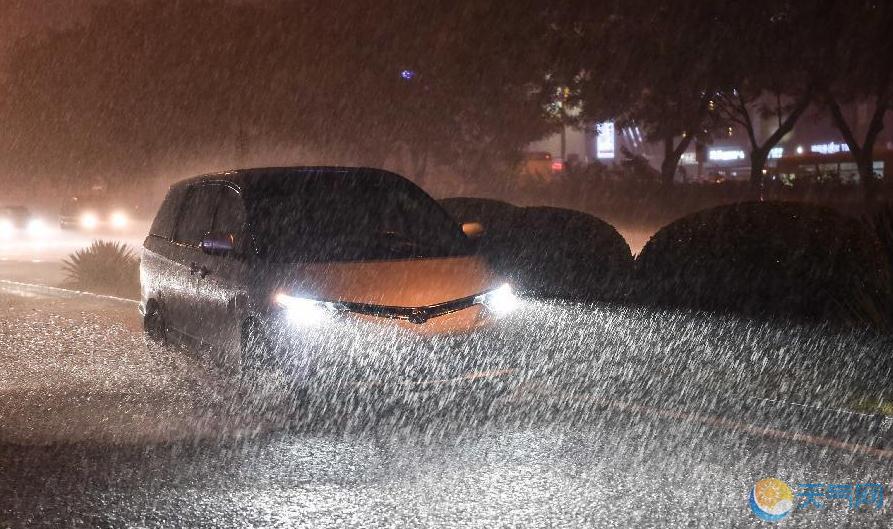
The third report of Intergovernmental Panel on Climate Change (IPCC) has pointed out that the land use change/cover is one of the most important factors which human activities affect climate. More and more attention is paid to urbanization because it is an extreme example of land use/cover change. In less than 50 years, the face of the Earth has been transformed drastically. In 1950, only 29% of the global population lived in cities, today over 50% live in cities, and this proportion is expected to reach 70% by 2050.
China and Asian-Pacific regions are experiencing the most rapid urbanization. With the rapid urbanization that has, and is still, taking place in Beijing and its surrounding areas, it is becoming increasingly significant to assess the role of this process in high-impact weather. According to the remote sensing data, the urban area of Beijing increases from 923 km2 (in 1980) to 1891 km2 (in 2010).

A car on the third ring road in Beijing braving through the rainfall "curtain" on the night of 27 July 2015 (photo from www.tianqi.com)
As early as the 19th century, Dr. Stanley CHANGNON proposed and implemented a METROMEX (Metropolitan Meteorological Experiment) plan. The results showed that urbanization obviously increases the precipitation of moderate and heavy convective rainfall and therefore he proposed the hypothesis of its mechanism.
In recent years, the frequent rainstorm leads to urban waterlogging. How does the urbanization affect the precipitation in Beijing? Prof. LIU Yimin and Dr. YU Miao of Institute of Atmospheric Physics selected a typical heavy rainfall event (20120721) and used WRF model coupled with multi-layer urban canopy model (BEP) including the diurnal variation of anthropogenic heat to simulate this event.
They further designed two sensitive tests by using two high-resolution land use maps of 1990 and 2000 to find out the impact of urbanization on this event and possible mechanism. The results show that urbanization leads to total precipitation increasing in up- and downstream directions of Beijing downtown (up to 30%).
Urbanization plays a significant role in frontal-type rainfall by causing the precipitation process advanced by one hour and moving slowly in urban area. The frequency of total precipitation amount above 250 mm and precipitation intensity above 40hr-1 mm are both increased, which consequently makes the risk of urban waterlogging increasing.

86-10-68597521 (day)
86-10-68597289 (night)

86-10-68511095 (day)
86-10-68512458 (night)

cas_en@cas.cn

52 Sanlihe Rd., Xicheng District,
Beijing, China (100864)

